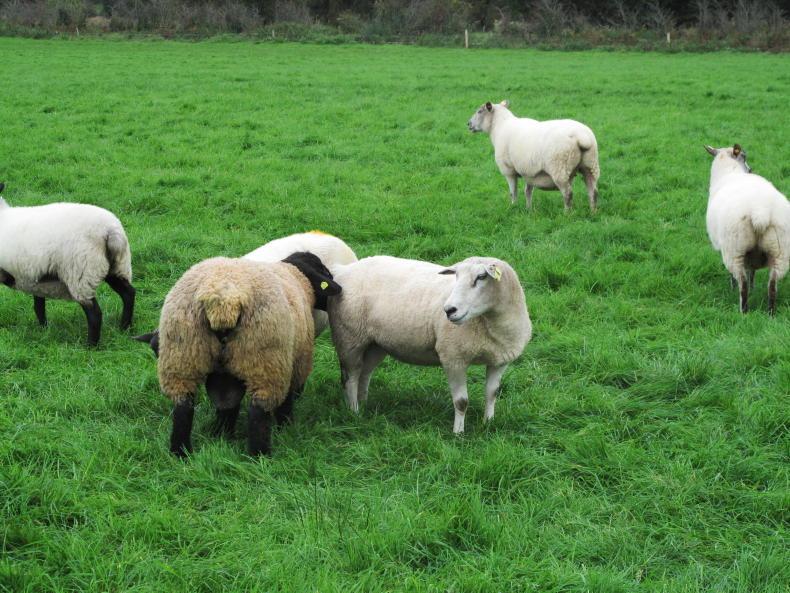Farmers heading into this year’s sheep breeding season will be hoping for more suitable conditions than experienced in late summer/early autumn in 2022.
Tight feed supplies in the east and south of the country had lasting consequences on breeding performance, with the average litter size reducing by upwards of 0.1 to 0.2 lambs per ewe joined to the ram.
There were also some reports of delayed lambing dates due to ram fertility issues linked to weather and higher temperatures.
There is little that could be done where weather was concerned, but the experience does shed light on the benefits of having ewes and rams in optimum condition heading into the breeding season.
The challenges experienced in March and April 2023 were another reminder of our reliance on weather.
We cannot look at one year in isolation but it is good practice to review your system and ask if the breeding policy in place is the best fit for your farm.
Important aspects that should be considered when developing your farm’s breeding policy are outlined here with advice provided by Michael Gottstein, Teagasc head of sheep programme.
The new genotyped ram action, as part of the Sheep Improvement Scheme, will also shape breeding and management decisions.
Over 6,000 farmers are required to purchase a genotyped ram in 2023.
This requirement will have a much wider effect with pedigree breeders charged with producing scheme eligible rams.

Early preparation of ewes and rams will deliver benefits with the potential for a higher lamb crop.
We outline reader queries received in recent weeks, providing information on finding rams eligible for the scheme.
Pedigree breeders also need to be cognisant of new restrictions that will be imposed on their farm where livestock are imported from Britain.
These restrictions are outlined here, along with rules concerning the movement of breeding and production of sheep to and from Northern Ireland.
Farmers heading into this year’s sheep breeding season will be hoping for more suitable conditions than experienced in late summer/early autumn in 2022.
Tight feed supplies in the east and south of the country had lasting consequences on breeding performance, with the average litter size reducing by upwards of 0.1 to 0.2 lambs per ewe joined to the ram.
There were also some reports of delayed lambing dates due to ram fertility issues linked to weather and higher temperatures.
There is little that could be done where weather was concerned, but the experience does shed light on the benefits of having ewes and rams in optimum condition heading into the breeding season.
The challenges experienced in March and April 2023 were another reminder of our reliance on weather.
We cannot look at one year in isolation but it is good practice to review your system and ask if the breeding policy in place is the best fit for your farm.
Important aspects that should be considered when developing your farm’s breeding policy are outlined here with advice provided by Michael Gottstein, Teagasc head of sheep programme.
The new genotyped ram action, as part of the Sheep Improvement Scheme, will also shape breeding and management decisions.
Over 6,000 farmers are required to purchase a genotyped ram in 2023.
This requirement will have a much wider effect with pedigree breeders charged with producing scheme eligible rams.

Early preparation of ewes and rams will deliver benefits with the potential for a higher lamb crop.
We outline reader queries received in recent weeks, providing information on finding rams eligible for the scheme.
Pedigree breeders also need to be cognisant of new restrictions that will be imposed on their farm where livestock are imported from Britain.
These restrictions are outlined here, along with rules concerning the movement of breeding and production of sheep to and from Northern Ireland.







 This is a subscriber-only article
This is a subscriber-only article










SHARING OPTIONS: